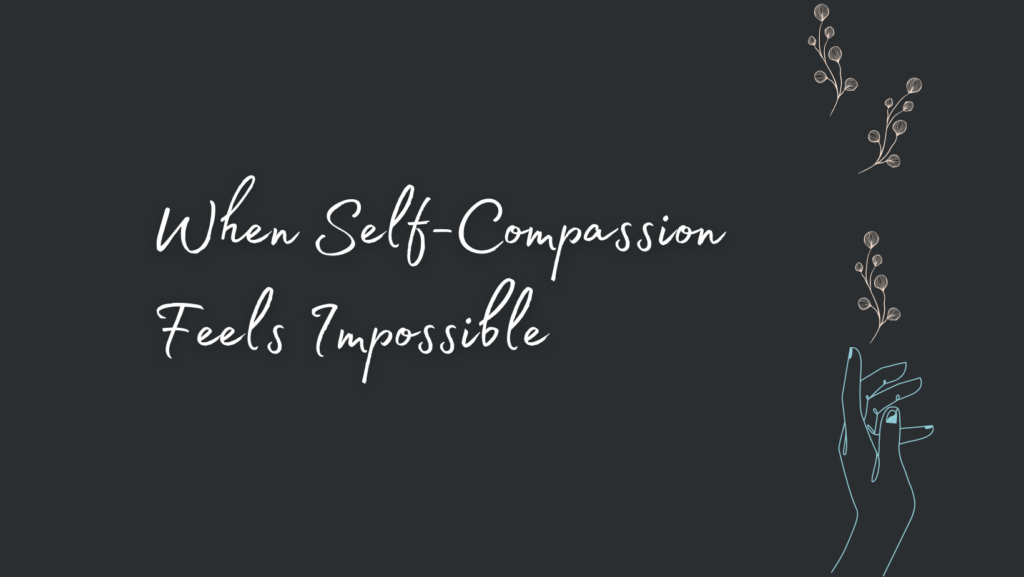
A companion post to Self-Compassion Morsels: 31-day drip course
”If you’ve learned to rely on your inner critic for survival, self-compassion can feel nearly impossible. It may feel so unfamiliar that it doesn’t make sense, or it can even feel like a threat to the parts of you that have survived in the absence of compassion.
Please know that it is possible to experience compassion when you approach whatever you are experiencing as something to be curious and tender towards.
Hear me out, the part of you that struggles with compassion is committed to something. Now imagine that at its core that this part of you is committed to your safety and survival. This is a part of evolutionary development, and for some, it becomes an extremely heightened resource due to stressful/threatening lived experiences. Some parts learned to survive through a critical narrative.
And now, all of a sudden, you’re asking these parts to step back and let you practice compassion. Of course, they’re a bit freaked out, creating an internal conflict between your critical survivor and a part that desires to practice compassion. It can be helpful to understand that they ultimately want the same things; to protect and keep you safe, they just have different methods of achieving their goal. The difference is that the adaptive strategy of criticism that supported you in the past isn’t working as well now as it once did. In fact, you might even find it isolating and hurtful. Exploring this in therapy can be a very fruitful experience.
Here are some practices that can help expand your capacity for compassion:
Easing into Compassion
It can be helpful to envision a caring inner-wise part. If having an inner compassionate part feels too foreign, call on and envision an archetype that speaks to you.
In my Inner Critic | Inner Wisdom Guidebook, we dive deeper into understanding and building a relationship with Inner Wisdom, and connecting to a wise archetype is part of what we explore.
It’s a practice formed from my personal therapy, where I envisioned a Tree every time I tried to connect with my inner compassionate part. Your compassionate part can be someone real, imaginary, an archetype, a spiritual figure, an animal, or anything else. Be as detailed as possible in your creation of this part. How do they speak, what do they wear, etc.? What colour are their petals? Build a detailed understanding of them to help your senses feel enriched in this exercise.
Acceptance Practice
Start by naming and accepting that for part of you; compassion is hard. You might say,
“It makes sense that compassion is hard for the part of me that learned to survive through criticism. May I still choose to hold myself in kind regard. May I hold this part of me in kind regard.”
Try to to maintain a connection to compassion while acknowledging your struggle without overly investing in the fears and beliefs of your critic.
In my 31-day drip course, Self-Compassion Morsels, we practice gently weaving in compassion in bite-sized, digestible amounts so that you can practice acceptance and integrate a kinder, more compassionate part of yourself.
